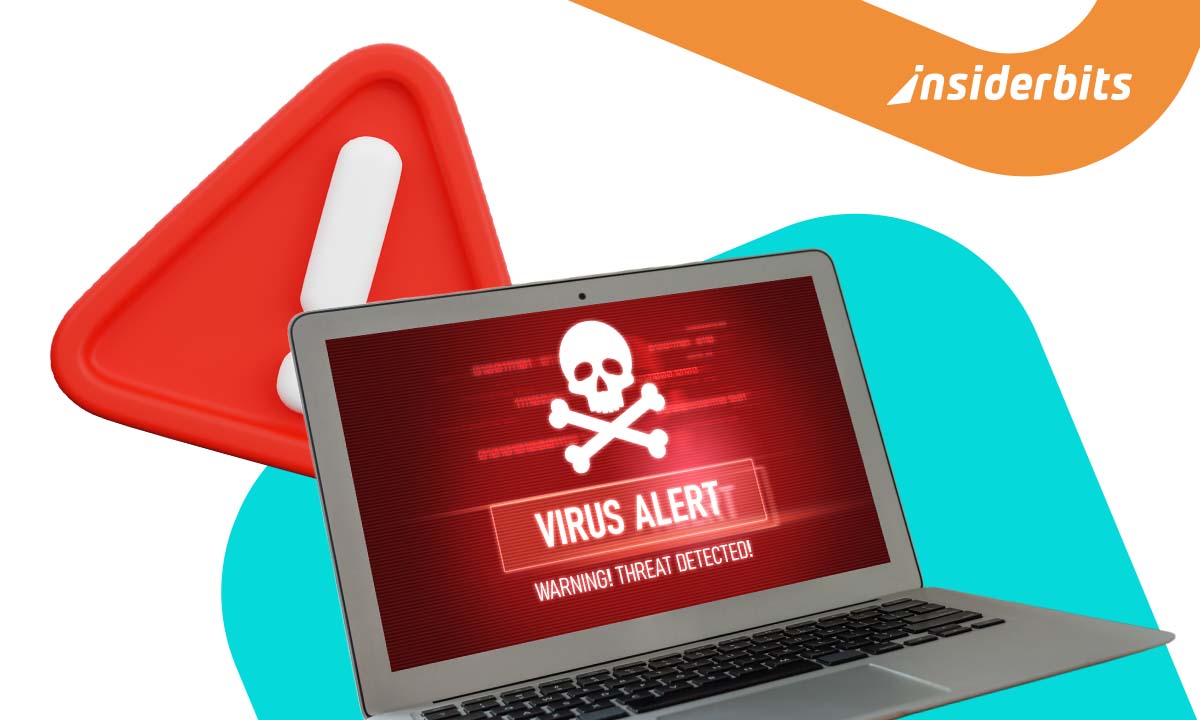Getting to know that your website was hacked can be a nightmare. If you run a business, this breach can cause reputation damage, data leaks, or even blacklisting from search engines. Yet, many site owners don’t realize something’s wrong until visitors point it out, or worse, traffic drops and strange errors begin to appear.
If your website starts acting suspiciously, it’s crucial to detect the issue early and respond fast. This guide outlines six red flags to watch for, the most common types of attacks in 2025, and reliable tools you can use to scan and secure your website from further harm.
- 20 hack di Facebook Messenger che non sapevate esistessero
- Trucchi Android: Come passare dall'Assistente Google all'IA Gemini
- Come recuperare l'account Instagram hackerato: Guida rapida
How to Know If Your Website Was Hacked
Hackers rarely leave a calling card, but there are signs your website may have been compromised.
One of the most common signs is a sudden drop in traffic, which can signal that your site has been blacklisted by search engines or is redirecting users elsewhere.
In addition, other signs include unexpected pop-ups, spammy ads, or unrecognized content appearing on your pages.
If users report warnings from antivirus software or your site redirects to shady domains, that’s a major red flag.
You might also notice new admin accounts, strange files in your hosting panel, or difficulty logging into your CMS.
In some cases, hackers hide their presence by altering core files subtly, so the breach isn’t obvious until real damage is done.

The Most Common Security Breaches in 2025
Cyberattacks in 2025 have become increasingly sophisticated, taking advantage of even small vulnerabilities with remarkable speed.
The weaknesses that are most exploited continue to be outdated plugins, themes, or CMS versions, which are often left unpatched by site owners.
In many cases, even well-designed websites fall victim simply because their security updates were delayed.
One of the most widespread methods today is malware injection, a tactic where harmful scripts are embedded directly into your site’s code.
In some cases, the malware operates in the background for weeks without detection, slowly damaging your reputation and user trust.
Cross-site scripting (XSS) and SQL injections remain common entry points. These attacks allow hackers to gain access to backend systems, extract sensitive data, or create fake administrative functions that override user permissions.
Once embedded, these vulnerabilities can be used to manipulate content, hijack user sessions, or embed more harmful scripts.
Another increasingly dangerous tactic is credential stuffing. In this type of attack, bots test combinations of leaked usernames and passwords gathered from previous data breaches across various platforms.
Altogether, these threats demonstrate the importance of proactive website maintenance and the use of automated monitoring tools to detect anomalies before they escalate.
Tools to Clean and Recover Your Site
Wordfence
Wordfence is one of the most trusted security plugins available for WordPress websites. It offers a malware scanner that checks your core files, plugins, themes, and uploads for suspicious changes or code injections.
What sets it apart is its built-in Web Application Firewall (WAF), which blocks malicious traffic before it reaches your site.
The plugin also features login protection, rate-limiting tools, and real-time threat intelligence drawn from a global database of known attacks.
This helps site owners not only detect breaches, but also prevent repeated intrusion attempts. Its dashboard makes it easy for non-technical users to monitor security status and receive alerts when issues are found.
Sucuri
Sucuri offers a cloud-based security suite that works with any website platform, including WordPress, Joomla, Magento, and static HTML sites.
It provides continuous scanning, malware removal, and a powerful firewall to prevent future attacks.
One of its standout tools is SiteCheck, a free online scanner that quickly detects if your site has been blacklisted, defaced, or compromised.
For those experiencing an active hack, Sucuri’s professional incident response team can assist in cleaning infected files, restoring performance, and submitting your site for Google reindexing.
It’s especially useful for business websites that require 24/7 uptime and fast support during critical situations.
MalwareBytes
While primarily known for desktop antivirus software, MalwareBytes is also a powerful tool for scanning local website files before deployment.
This is particularly helpful if you’re restoring a backup or uploading content via FTP and want to ensure no malicious code is being reintroduced.
MalwareBytes detects trojans, backdoors, spyware, and rootkits that might not be flagged by standard website scanners.
Additionally, for developers and web admins working across devices, it provides a vital extra layer of protection, keeping staging environments clean and helping prevent reinfection after a hack.
What to Do Immediately After a Hack
Once you suspect or confirm that your site was hacked, you need to act fast.
First, take the site offline temporarily to prevent users from interacting with infected content or falling into traps.
Then, notify your hosting provider; they may offer emergency scans or temporary lockdown tools.
Next, reset all passwords, especially for admin accounts, FTP access, and database credentials.
Review user roles and remove any unfamiliar or suspicious accounts. Scan your site using tools like Wordfence or Sucuri to locate the source of the infection.
If you’re unsure how to clean the site manually, consider hiring a professional malware removal service.
Once clean, submit your site to Google Search Console to request reindexing and remove any security warnings from search results.
How to Prevent Future Attacks
Securing your site after a hack is only part of the job, preventing future breaches is critical.
Start by enabling automatic updates for your CMS, plugins, and themes, so known vulnerabilities are patched as soon as possible.
After that, you need to implement two-factor authentication for admin logins and limit access by role to reduce human error.
Regularly back up your website, using cloud storage or hosting-based solutions, so you always have a clean copy available.
Then, install a Web Application Firewall (WAF) like those from Sucuri or Wordfence to block suspicious traffic before it reaches your site.
You should also schedule routine security scans and monitor your analytics for unexpected traffic spikes or drops, which can indicate suspicious behavior.
Finally, educate your team—phishing emails, weak passwords, and unsecured devices are often the first point of entry for hackers.
6 Signs Your Website Was Hacked and How to Fix It – Conclusion
Your website is your digital storefront, and protecting it should be a top priority. From early warning signs to reliable recovery tools, taking action quickly can save you time, and consequently, money.
With strong security habits and regular updates, you can reduce the risk of future attacks and keep your site running safely and smoothly, no matter what comes your way.
Correlato: Facebook Marketplace Scams: Red Flags You Need to Know
Ti è piaciuto questo articolo? Salvate il blog Insiderbits tra i vostri preferiti per conoscere gli strumenti più recenti, i consigli tecnologici creativi e le scoperte nel campo dell'editing fotografico.





